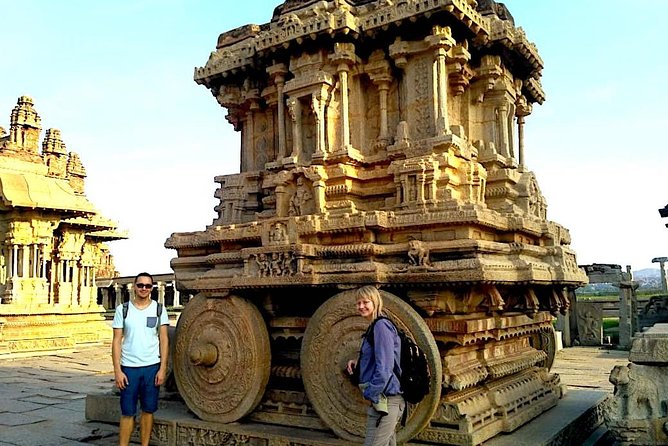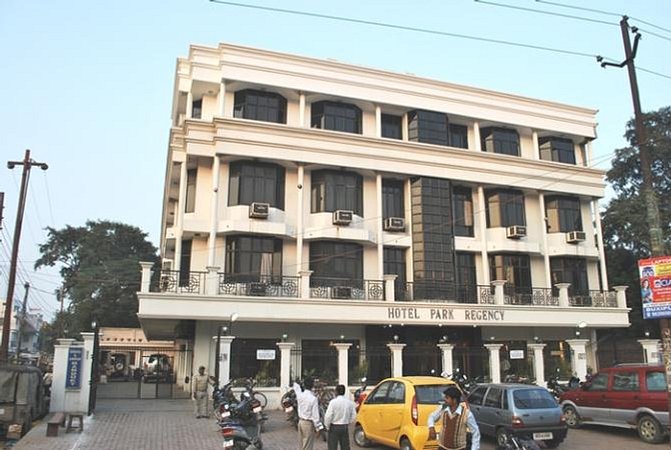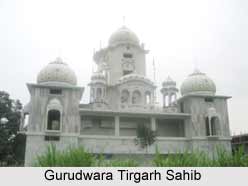Humayun’s Tomb is a stunning example of Mughal architecture. It stands as a testament to India’s rich history and heritage.
Nestled in the heart of Delhi, Humayun’s Tomb is a UNESCO World Heritage site. This magnificent mausoleum was built in the 16th century by Humayun’s widow, Bega Begum. The tomb not only houses the remains of the Mughal Emperor Humayun but also reflects the grandeur of Mughal design.
Its beautiful gardens, intricate lattice work, and majestic dome captivate visitors from around the world. Exploring this historic monument offers a glimpse into the opulence and architectural brilliance of the Mughal era. Join us as we delve into the history, significance, and beauty of Humayun’s Tomb.
Introduction To Humayun’s Tomb
Humayun’s Tomb is a magnificent structure in Delhi, India. It stands as a testament to Mughal architecture. Built in the 16th century, it has a rich history. The tomb is a UNESCO World Heritage Site. It attracts many visitors each year. Let’s delve into its historical significance and architectural marvel.
Historical Significance
Humayun’s Tomb was commissioned by his wife, Empress Bega Begum. It was completed in 1572. This tomb marks an important period in Indian history. It was the first garden-tomb on the Indian subcontinent. This structure inspired many other Mughal monuments, including the Taj Mahal. Its construction symbolized the power and heritage of the Mughal Empire.
Humayun, the second Mughal emperor, is buried here. His tomb represents a blend of Persian and Indian traditions. The site also houses the graves of many other Mughals. It serves as a reminder of the grand legacy of the Mughal dynasty.
Architectural Marvel
Humayun’s Tomb is an architectural masterpiece. It showcases the genius of Persian and Mughal architecture. The tomb stands on a large, elevated platform. Its design includes a mix of red sandstone and white marble. This combination creates a striking visual contrast.
The central dome is a prominent feature. It rises majestically, symbolizing the heavens. The tomb’s layout follows the charbagh, or four-quadrant garden layout. This design aims to represent paradise. Symmetry and geometric precision are key elements. The pathways and water channels enhance the beauty of the gardens.
The tomb’s intricate carvings and lattice screens are exquisite. They reflect the skilled craftsmanship of that era. Each detail adds to the tomb’s grandeur and elegance. The use of arches and domes creates a sense of harmony and balance. Humayun’s Tomb stands as a testament to architectural brilliance.
Mughal Architectural Influence
Humayun’s Tomb is a stunning example of Mughal architecture. This majestic structure marks the beginning of a new era in Indian architecture. Influenced by Persian styles, the tomb showcases the grandeur and sophistication that defined the Mughal dynasty. Let’s dive deeper into the elements that make this tomb a masterpiece.
Persian Elements
When you first lay eyes on Humayun’s Tomb, it’s hard not to be captivated by its beauty. One of the most prominent features is the dome, which is inspired by Persian architecture. The dome is a striking sight, rising majestically into the sky. It represents eternity and the heavens.
Another Persian influence is the use of intricate tile work. The tomb is adorned with glazed tiles that shimmer in the sunlight. These tiles are often blue and white, adding a touch of elegance and serenity to the structure.
Let’s not forget the lush gardens surrounding the tomb. These gardens are designed in the Persian style known as Charbagh. The gardens are divided into four parts, symbolizing the four rivers of paradise. Walking through these gardens feels like stepping into a tranquil oasis.
Innovative Design
Humayun’s Tomb isn’t just about borrowing Persian elements. The Mughals were innovators, and their creativity shines through in this monument. For instance, the tomb’s double dome is an architectural marvel. The double dome consists of an outer shell and an inner shell. This design not only enhances the tomb’s grandeur but also keeps the interior cooler.
Another fascinating aspect is the use of red sandstone and white marble. This combination creates a stunning contrast. The red sandstone represents strength and power, while the white marble symbolizes purity and peace. It’s a visual feast that leaves visitors in awe.
Ever noticed the clever use of symmetry in Mughal architecture? Humayun’s Tomb is a perfect example. The entire structure is meticulously symmetrical, from the placement of the entrance to the alignment of the windows. This symmetry creates a sense of harmony and balance, making the tomb pleasing to the eye.
In conclusion, Humayun’s Tomb is a testament to the Mughal’s architectural brilliance. It’s a blend of Persian elegance and innovative design, creating a monument that stands the test of time. Whether you’re an architecture enthusiast or simply looking to explore history, this tomb is a must-visit.
Construction And Design
Humayun’s Tomb stands as a beautiful example of Mughal architecture. Built in the 16th century, it showcases the grandeur of design and craftsmanship. The tomb was commissioned by Empress Bega Begum, Humayun’s widow, and designed by Persian architect Mirak Mirza Ghiyas.
Materials Used
The tomb is constructed using red sandstone. This material gives it a striking appearance. White marble is used in the domes and detailing. These materials add elegance to the structure. The combination of red sandstone and white marble creates a stunning contrast.
Notable Features
Humayun’s Tomb features a Persian-style garden. This garden is divided into four sections, known as Charbagh. The main entrance is grand, with high arches and intricate carvings. The tomb’s dome is double-layered, giving it a majestic look. The central chamber houses Humayun’s cenotaph. Around it, there are smaller chambers for other royal members.
Another notable feature is the high plinth. This raises the tomb above ground level, giving it prominence. The tomb is surrounded by lush greenery, enhancing its beauty. Pathways and water channels add to the serene atmosphere.

Credit: en.wikipedia.org
Symbolism And Artistry
Humayun’s Tomb is not just a grand structure; it’s a masterpiece of symbolism and artistry. Each element, from its geometric patterns to the garden layout, tells a story of the Mughal era’s rich culture and artistic flair. Let’s dive into the intricate details that make this monument a UNESCO World Heritage site.
Geometric Patterns
One of the most striking features of Humayun’s Tomb is its intricate geometric patterns. These patterns are not only visually appealing but also hold deep symbolic meaning. The use of symmetry and repetitive shapes symbolizes the infinite nature of the universe and the unity of existence.
If you look closely, you’ll notice how the patterns create a sense of balance and harmony. They are designed to draw the viewer’s eye and lead it naturally across the surface. This technique is a hallmark of Islamic art, where geometry and mathematics play a crucial role. It’s fascinating how these patterns, which might seem complex at first glance, are actually based on simple mathematical principles.
Garden Layout
The garden layout of Humayun’s Tomb is another area where symbolism and artistry come together beautifully. Known as a ‘Charbagh’ or four-part garden, it is divided by walkways or flowing water into four smaller sections. This layout is symbolic of the Quranic description of paradise, which is often depicted as a garden with four rivers.
The garden is not just a place for aesthetic appreciation; it also serves a practical purpose. The lush greenery and water channels create a serene environment, reflecting the Mughal belief in the harmonious coexistence of nature and architecture. Walking through these gardens, you can almost feel the tranquility that the Mughal emperors must have experienced.
Interestingly, the garden layout also represents the Mughal empire’s view of the world. The central tomb symbolizes the emperor, while the four gardens signify the major parts of the empire. It’s a beautiful metaphor for the emperor’s role as the unifying force of the realm.
| Feature | Symbolism |
|---|---|
| Geometric Patterns | Unity of existence, infinite nature of the universe |
| Garden Layout | Quranic paradise, harmonious coexistence, representation of the empire |
In conclusion, the symbolism and artistry of Humayun’s Tomb offer a rich tapestry of cultural and historical insights. The geometric patterns and garden layout are not just design elements; they are storytellers, narrating tales of a glorious past and a sophisticated civilization. So, next time you visit, take a moment to appreciate these intricate details – they are the soul of this magnificent monument.
Cultural Impact
Humayun’s Tomb in Delhi, India, isn’t just a beautiful piece of architecture; it has had a huge impact on culture and history. This grand structure has inspired many and continues to be a symbol of love, beauty, and heritage. Let’s explore how Humayun’s Tomb has influenced culture in various ways.
Inspiration For Taj Mahal
Did you know that Humayun’s Tomb served as a blueprint for the world-famous Taj Mahal? It’s true! The grand design, with its symmetrical gardens and large domed mausoleum, caught the eye of Shah Jahan, who later built the Taj Mahal in memory of his beloved wife, Mumtaz Mahal.
Similarities:
- Both have large, central domes.
- Both are surrounded by beautiful, geometric gardens.
- Both use red sandstone and white marble.
Heritage Site Recognition
Humayun’s Tomb is not just a national treasure; it’s recognized worldwide. In 1993, UNESCO declared it a World Heritage Site. This recognition helps preserve its beauty and significance for future generations.
Why is this important?
- It ensures the tomb is protected and maintained.
- It draws international tourists, promoting cultural exchange.
- It highlights India’s rich history and architectural skills.
In conclusion, Humayun’s Tomb has left a lasting mark on culture and history. From inspiring the Taj Mahal to being a proud UNESCO World Heritage Site, its impact is undeniable. Next time you visit, think about how this beautiful tomb has shaped the world.

Credit: www.britannica.com
Restoration Efforts
Humayun’s Tomb is a symbol of rich history and architecture. Yet, time and weather have taken a toll on this grand monument. Restoration efforts aim to preserve its beauty for future generations. These efforts face many challenges. Let’s explore how experts are tackling them.
Conservation Challenges
Conserving Humayun’s Tomb is no easy task. The structure is over 400 years old. Weathering and pollution have caused significant damage. Water seepage has weakened the foundations. Vandalism also poses a threat. Each challenge requires a unique solution. Experts must balance preserving history and using modern techniques. The intricate artwork needs special care. Small errors can cause big damage.
Modern Techniques
Restorers use advanced methods to solve these issues. Laser scanning helps map the tomb. It creates a detailed 3D model of the structure. This model aids in identifying weak spots. Experts then plan targeted interventions. Traditional materials are used to maintain authenticity. Lime mortar, similar to the original, is one example. Skilled artisans work on the intricate designs. They recreate damaged parts with precision.
Another modern technique is the use of drones. Drones provide aerial views of the tomb. They help inspect hard-to-reach areas. This method saves time and ensures safety. Ground-penetrating radar is also used. It helps check the condition of foundations. Such technology ensures that restorations are thorough.
These efforts are crucial. They help preserve the tomb’s glory for future generations. Each technique contributes to a comprehensive restoration plan. Thus, blending history with modern science.
Visitor Experience
Visiting Humayun’s Tomb is a memorable experience. The grand architecture and serene gardens offer a glimpse into India’s rich history. Whether you’re a history buff or just love beautiful places, Humayun’s Tomb has something for everyone.
Tour Highlights
Start your tour at the main entrance. The intricate carvings will amaze you. Walk through the Char Bagh gardens. These Persian-style gardens are peaceful and well-maintained. Explore the main tomb, a marvel of Mughal architecture. Look at the stunning dome and elegant arches.
Don’t miss Isa Khan’s tomb. It’s older than Humayun’s Tomb and equally impressive. Visit the small museum on-site. It provides interesting facts about the tomb’s history. Finally, enjoy the view from the terrace. It offers a panoramic view of the surrounding area.
Best Times To Visit
Visit during the cooler months. October to March is ideal. The weather is pleasant and perfect for exploring. Arrive early in the morning. You will avoid the crowd and enjoy a peaceful visit. Sunset is another good time. The tomb looks magnificent in the evening light.
Avoid visiting during the summer. The heat can be intense and uncomfortable. Weekdays are less crowded than weekends. Plan your visit accordingly for a better experience.
Legacy Of Humayun’s Tomb
Humayun’s Tomb in Delhi stands as a remarkable legacy of Mughal architecture. Built in the 16th century, it marks the resting place of the Mughal Emperor Humayun. The tomb’s grandeur and design influenced many later Mughal monuments. It holds historical significance and continues to attract visitors worldwide.
Historical Perspectives
Humayun’s Tomb reflects Persian architectural styles. The tomb’s construction began in 1565 and completed in 1572. It was the first garden-tomb in the Indian subcontinent. This innovative design set a new trend in Mughal architecture. The tomb’s intricate details showcase the artistic skills of the era.
Designed by Mirak Mirza Ghiyas, the tomb symbolizes the emperor’s grandeur. It combines red sandstone with white marble, creating a stunning visual effect. This architectural marvel paved the way for future Mughal constructions. The Taj Mahal, for instance, drew inspiration from Humayun’s Tomb.
Continued Reverence
Today, Humayun’s Tomb remains a UNESCO World Heritage site. It is a symbol of India’s rich history and culture. Visitors come from all over to admire its beauty. The tomb’s gardens provide a serene escape from the busy city. People often visit to reflect and find peace.
Local communities hold the tomb in high regard. Many consider it a sacred place. Regular maintenance ensures it remains pristine. Events and festivals sometimes take place in its grounds. These activities keep the tomb’s legacy alive. Humayun’s Tomb continues to inspire awe and reverence.

Credit: www.tripadvisor.com
Frequently Asked Questions
What Is The Significance Of Humayun’s Tomb?
Humayun’s Tomb is a UNESCO World Heritage Site. It symbolizes Mughal architecture’s grandeur. The tomb inspired later Mughal monuments, including the Taj Mahal.
What Is The Difference Between Taj Mahal And Humayun’s Tomb?
Taj Mahal, built by Shah Jahan, is a mausoleum for Mumtaz Mahal. Humayun’s Tomb, built by Akbar, is Humayun’s resting place. Taj Mahal features white marble, while Humayun’s Tomb showcases red sandstone. Both are UNESCO World Heritage Sites in India.
Why Are There Stars On Humayun’s Tomb?
Stars on Humayun’s tomb symbolize celestial harmony and protection. They reflect Persian architectural influence and Islamic geometric patterns.
Did Humayun Build The Taj Mahal?
No, Humayun did not build the Taj Mahal. Shah Jahan, the Mughal emperor, commissioned its construction in memory of his wife Mumtaz Mahal.
Conclusion
Humayun’s Tomb stands as a timeless piece of architectural brilliance. Its beauty and history captivate visitors. This monument reflects India’s rich cultural heritage. A visit here offers a glimpse into the past. Experience the serene gardens and intricate designs. Every corner tells a story worth exploring.
Humayun’s Tomb is not just a site; it’s a journey through history. Plan your visit to witness its grandeur. Let its legacy inspire you. Discover the magnificence of this UNESCO World Heritage site. Enjoy the charm and elegance of Humayun’s Tomb.





